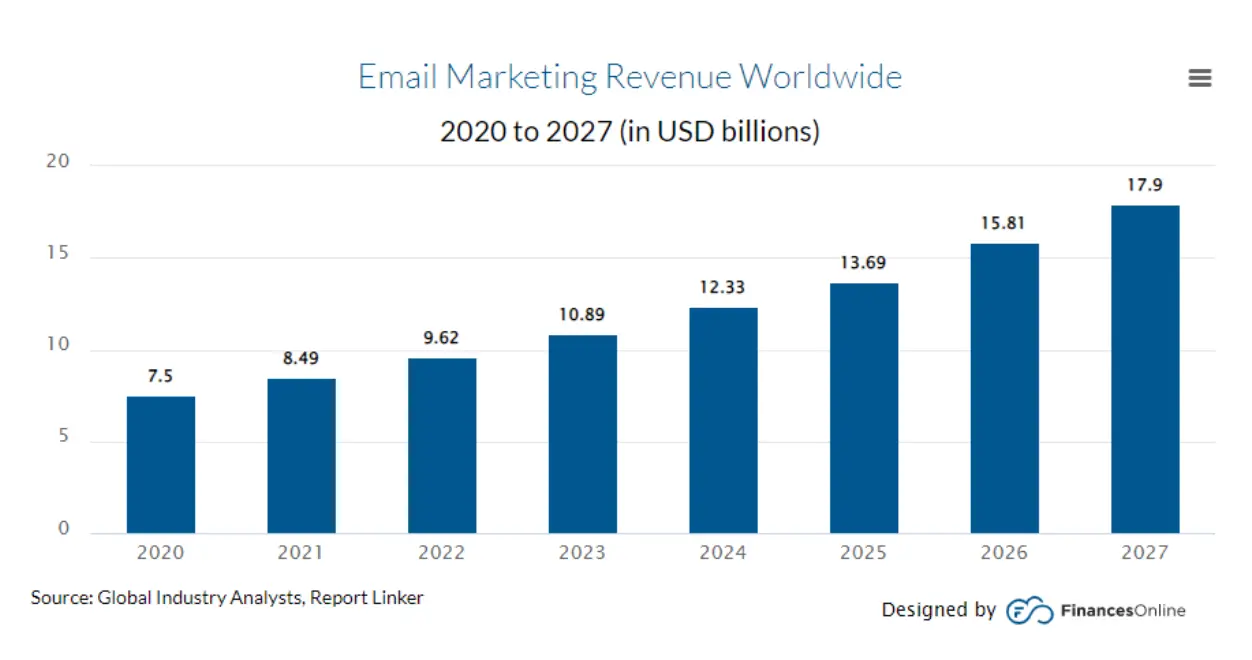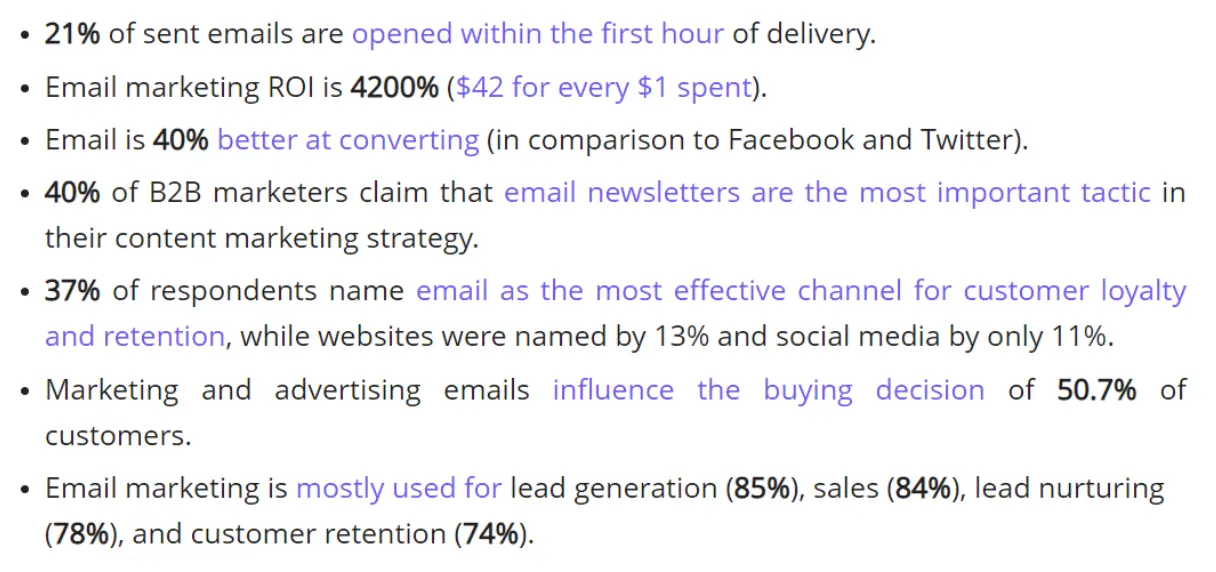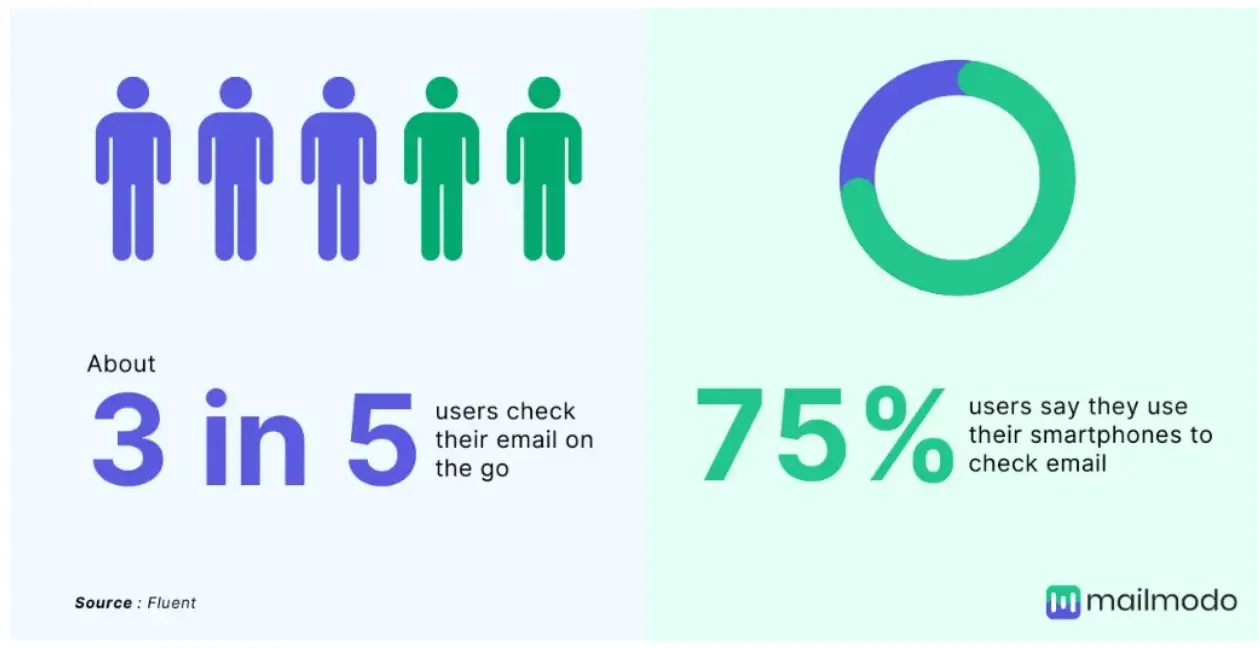From popular practices to out-of-the-way marketing strategies, trends take time to keep up with. Email marketing is one of the most fruitful ways for small businesses to capture leads, build brand awareness, and drive growth without breaking the bank.

Before explaining how to generate leads with small business email marketing, let’s explore the main benefits that come with it:
- Generating high-quality leads and driving conversions
- Informing subscribers about product launches, events, social media contests, and more
- Nurturing existing customers and building brand loyalty
- Personalizing your outreach to target the right audience segment at the right time
What’s the catch? You need expertise to achieve that, especially if you’re a small business owner. This article will cover the most effective ways to include emails in your marketing strategy.
5-Step Email Marketing Strategy to Generate Leads
- Pick the right email marketing platform
- Build your email list
- Set up email types
- Create incredible email content
- Evaluate results
There are affordable yet effective tactics to reach potential leads and get them to notice you. As your business grows, you’ll develop a strong contact database and the skills to manage it successfully.
1. The Ultimate Weapon: Pick the Right Email Marketing Service
It’s your most critical decision when it comes to small business email marketing.
There are several ESPs suitable for small business email marketing. Some offer a free trial, while others have a free version. But how do you know which one fits your small business best?
First, ensure your email marketing platform includes all the necessary features. Email marketing software like Active Campaign, Constant Contact, and Mailchimp are all solid options.
When exploring Cleverly competitors, tools such as Apollo, LinkedHelper, and Dux-Soup also offer strong alternatives for automated lead generation.
Opt for a solution that supports all stages of your email marketing workflow.
- Email editor with drag-and-drop design and intuitive interface
- Pre-designed and customizable templates
- Personalization and segmentation options
- Automated workflows triggered by user actions
- Lead generation tools with engaging landing pages and signup forms
- Integrations with popular third-party platforms
- Advanced reporting (opens, clicks, unsubscribes, etc.)
Selecting the right tool gives you everything needed to bring your small business email marketing to life.
2. The Groundwork: Build Your Email List
Using an email finder tool helps you efficiently gather contact information and expand your reach.
Your ESP will only take you so far without a solid database of active, engaged subscribers. Here are proven methods to attract leads and grow your contact list:
- Create signup forms and landing pages for subscribers who opt into your emails.
- Use the free POWR pop-up builder to set up exit-intent popups that encourage visitors to subscribe.
- Promote your signup pages on social media.
- Offer lead magnets such as ebooks, guides, or webinars.
- If you have a physical store, collect customer emails at checkout.
Always comply with GDPR and CAN-SPAM regulations. Regularly remove fake or inactive addresses and sanitize your email list.

After creating your list, analyze subscriber data to build personas, understand pain points, and personalize your communications.
3. The Core: Set Up Your Email Types
Now that everything is in place, it’s time to build your email marketing plan.
Use your ESP and the latest email marketing trends to create, automate, and track email marketing metrics.
Common email types include:
Welcome Emails
Welcome emails help establish a relationship with new subscribers by introducing your brand, product value, and story. You can also offer a first-purchase discount.

Follow-up Emails
Follow-up emails prompt recipients to take a specific action — from event responses to invoice payments. Keep them short and focused.
Customer Feedback Emails
Requesting feedback via surveys shows customers you care and are willing to improve based on their input.
Lead-Nurturing Emails
Lead nurturing messages guide prospects down your sales funnel through educational content that builds trust.
Newsletters
A newsletter keeps audiences informed about updates, launches, and events. Focus on value over selling.

Remember, the best send times depend on your target audience. Test different days and hours to maximize engagement.
4. The Essence: Create an Incredible Email
Most recipients skim emails — you have seconds to catch their attention and drive clicks. Here are key elements for a winning email:
- Write catchy subject lines that promise value and match your message.
- Keep your design clean and visually appealing.
- Use strong, actionable CTAs.
- Include relevant visuals to break up text.
- Add personalization to show your emails are tailored.
- Always optimize for mobile devices.

5. The Verdict: Evaluate the Results
To measure success, conduct A/B tests regularly. Test different subject lines, layouts, or send times to see what performs best.
Most ESPs provide analytics for opens, clicks, unsubscribes, and bounces. High open and click-through rates are positive, while high unsubscribe or bounce rates indicate room for improvement.
Use tools like pre-warmed email accounts to improve deliverability and DMARC report analyzers for deeper insights.
- Is your content personalized enough?
- Do you need better segmentation?
- Should you improve email account management?
- Is your signup process too time-consuming?
Use your reports to refine your approach and get your metrics within ideal ranges.
Final Words
Small business email marketing is most effective when you send messages that matter.
With modern email marketing tools, it’s easier than ever to design eye-catching campaigns, segment audiences, and automate workflows.
Every small business owner can scale their business to seven figures while building long-lasting relationships with their subscribers.
Author Bio
Maria Fintanidou works as a Copywriter for email marketing automation software Moosend. She created the Help Articles (FAQs) and oversaw the platform’s translations in Greek and Spanish. She loves exploring new cultures and ways of thinking through traveling, reading, and language learning.


